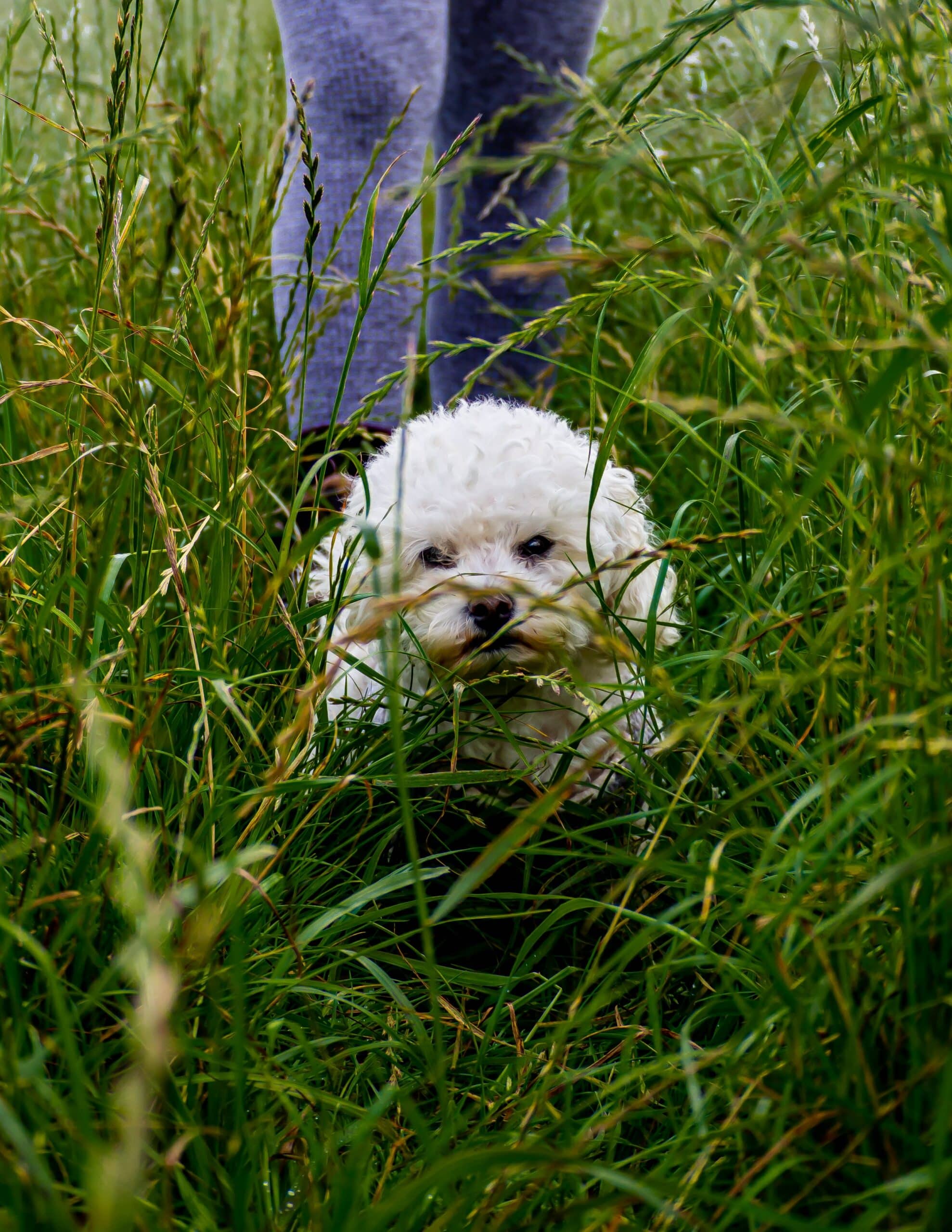
Bichon Frises are a breed that is relatively healthy, although, AIHA and ITP were implicated for the most Bichon Frise "years lost" ( a disease that kills individuals of breed preterm).
While cancer is a more frequent cause of mortality than AIHA and ITP, Bichon Frises who died of cancer lived for an average of 12.5 years.
The median age of hematologic fatalities was barely five years. Bichon Frises seemed to have a reduced amount of hematological-related disease fatalities (3%) in the UK sample than those in the United States and Canada survey (11 percent ).
Bichon Frises are a breed that is relatively healthy. Cataracts, diabetes, and allergies, which can lead to skin disorders and itching, can all be seen in them, leading to scratching and biting on their paws. Patellar luxation, heart disease, and liver disease are some of the other health issues that can be noticed in Bichon Frise.
The veterinarians advise testing for the following health issues for Bichon Frise , Hip Dysplasia, Patellar Luxation, Eye Health, Cardiac Evaluation, and Legg-Calves-Perthes.
Cataracts-A lens inside the eye focuses light on the back of the eye or the retina. The retina is where vision takes place. The eye's anatomy is comparable to that of a camera, which has a lens to focus light on the film. A cataract is a clouded or opaque lens.
Parasites-fleas, ticks, mites,worms-it is important to check our dog's health really often to protect them and protect ourselves
Heart failure- a heart valve weakens and slowly becomes deformed letting the blood leak around. Medications can be prescribed if it is approached early so the life expectancy of the pup will be increased.
Dilated cardiomyopathy, or DCM -is a fatal cardiac illness in which the heart grows too big, thin, and weak to adequately pump blood to the body. As the condition worsens, he may appear weak or fatigued, faint or collapse, breathe with difficulty, or cough. Beginning at age one, the veterinary might recommend an annual electrical heart test (ECG) and/or an echocardiography to detect aberrant cardiac rhythms early. If this disease is discovered, it might be treated with medicine and may also prescribe nutritional supplements.
Diabetes is on the list with increased frequency in Bichon Frises. Diabetes affects dogs that are unable to manage their sugar metabolism and require regular insulin injections. It is a dangerous ailment that must be diagnosed and treated as soon as possible. Weight loss is one of the symptoms, as is enhanced eating, drinking, and urination. Treatment involves a significant time and financial investment. Diabetic dogs with well-controlled diabetes now have the same life span as normal canines
Dysplasia, a genetic illness that causes the joints to grow incorrectly and leads to arthritis, affects both the hips and the elbows. Stiffness in your dog's elbows or hips could become an issue as he grows older. The owner may notice him becoming limp in his legs or having a hard time getting up after lying down. The veterinarian can treat arthritis as soon as possible to reduce discomfort and suffering. They might take X-rays of the dog's bones to detect problems as soon as possible. Surgery is occasionally a viable choice in life-threatening situations. Overweight dogs might acquire arthritis years before their normal-weight counterparts.
The dog's kneecap (patella) may occasionally slide out of position (called patellar luxation). You could observe him running along and then suddenly picking up a hind leg and skipping or hopping for a few steps. He then pushes his leg out sideways to force his kneecap back into position, and he seems fine. If the disease is minor and just affects one leg, your dog may not need much more than arthritis medicine. When symptoms are severe, surgery to straighten the kneecap to prevent it from springing out of position may be required.
Legg-Calve-Perthes Disease, a painful degenerative hip ailment. The specific etiology of this ailment is unknown, however, it is assumed to be an issue with blood circulation to the hip, causing the femoral head (the top of the thigh bone) to become fragile and easily fractured. It usually appears between the ages of six and nine months, causing discomfort and lameness in one or both back legs, and frequently necessitates surgery.
Many Bichon Frise fatalities are caused by autoimmune hemolytic anemia (AIHA, also known as immune-mediated hemolytic anemia, or IMHA) and immune-mediated thrombocytopenia (ITP). These illnesses can attack with almost no indication and kill in a matter of minutes. The immune system of the dog destroys its own red blood cells in AIHA, resulting in severe, life-threatening anemia. Weakness, loss of energy, loss of appetite, vomiting, diarrhea, high heart rate, quick breathing, dark-colored urine, and pale or yellow gums are all symptoms.
AIHA is frequently accompanied by ITP (immune-mediated thrombocytopenia) .Blood platelets (thrombocytes -which cause blood coagulation) are damaged in ITP. The most prevalent clinical manifestations are skin and mucous membrane hemorrhages. Mortality rates ranging from 20% to 80% have been observed.
Bichon Frises are also prone to portosystemic shunt, a congenital abnormality of the portal vein (which transports blood to the liver for purification). Some of the dog's blood skips the liver in this condition, and the unfiltered blood poisons the heart, brain, lungs, and other tissues with toxins.
Small size, low appetite, weak muscular development, limited learning process, weaker coordination, periodic vomiting and diarrhea, behavioral problems, seizures (particularly after a meal), and blindness can all occur in a Yorkie with this syndrome, leading to a coma and death. Surgery is frequently used to handle this disease.
If your dog has any of these symptoms seek emergency care, because they can be very serious (even a life-threatening condition):
- Head scratching or shaking, sore ears, or ear discharge
- Urinary inability or straining; discolored urine
- Cloudiness, redness, itching, or any other ocular anomaly
- Coughing, particularly at night or after waking up after sleeping, and fast breathing at rest
- Drinks and urinates more eats more, has a potbelly, and has a bad hair coat
- Weight loss, increased appetite, and thirst
- Gums in colors other than vivid pink
- Any unusual shaking, trembling, or involuntary tremors
- Leg stiffness, difficulty rising, sitting, using stairs, running, jumping, or "rabbit hopping"
Reference
https://en.wikipedia.org/wiki/Barbet_(dog)
https://en.wikipedia.org/wiki/Bichon
https://en.wikipedia.org/wiki/Bichon_Frise
https://en.wikipedia.org/wiki/Street_organ#Organ_grinders
https://en.wikipedia.org/wiki/Autoimmune_hemolytic_anemia
https://en.wikipedia.org/wiki/Thrombocytopenia
https://www.wikihow.com/Groom-a-Bichon-Frise
https://vcahospitals.com/know-your-pet/cataracts-in-dogs
https://www.akc.org/expert-advice/dog-breeds/do-hypoallergenic-dog-exist/









